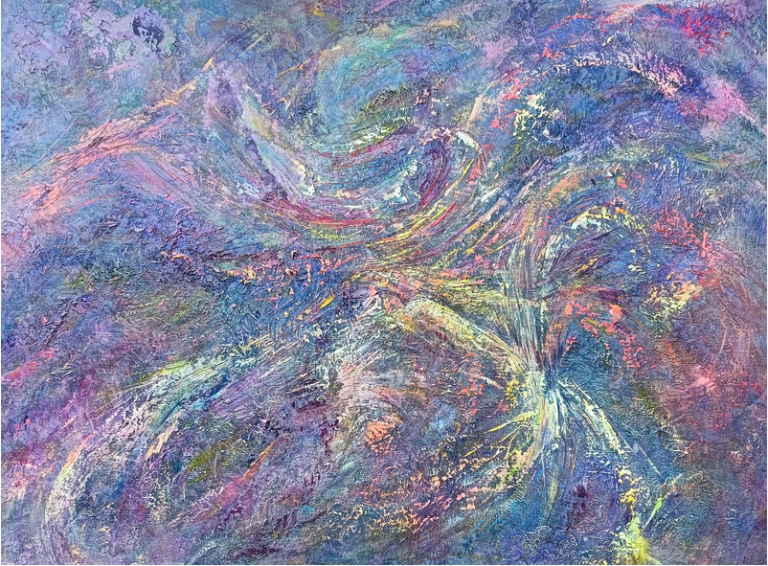David John Hilditch, born in Wolverhampton in 1951, is an artist whose work merges philosophy with visual expression. His paintings are captivating explorations that challenge perception and identity, creating a unique space where paint appears to evolve on the canvas, transcending time and space.
Hilditch’s journey in art started with a foundation in Birmingham, followed by a Fine Art Degree from Camberwell. Despite his early education, it was not until later in life, after a teaching career in Art and Design, that he dedicated himself fully to painting. Working from his studios in London and Shropshire, Hilditch immerses himself in the physicality of paint, allowing layers to build over time. This process-oriented approach reflects his philosophy of letting intention and spontaneity coexist.
One of his pieces, ‘Will 5’ (oil on canvas, 155×130 cm), epitomizes his style. The artwork is an abstract composition where movement and stillness merge. The strokes seem almost organic, inviting the viewer to follow their flow without dictating a specific narrative. The canvas becomes a space for contemplation, a reflection on the fluidity of existence.
Hilditch’s work often challenges traditional interpretations of structure. His ongoing series ‘Formations’ pushes this concept further. The ninth painting in the series, ‘Formations 1.9’ (oil on canvas, 4’×3’), is a prime example. It explores the formation of structures through color, rhythm, and texture, inspired by both micro and macro images from nature. Hilditch’s technique, layering colors with dynamic strokes, creates a sense of continuous transformation. The viewer is left contemplating the origin of these forms—are they representations of the physical world, or expressions of something more abstract?
This series exemplifies Hilditch’s commitment to exploring the boundaries of perception. His work does not seek to resolve the tension between abstract and representational art but instead invites a dialogue between the two. Each painting is a statement of how art can be both a personal reflection and a universal inquiry into the nature of being.
Hilditch’s dedication to his craft is evident not just in his technique but in his willingness to evolve his ideas. He continues to expand the ‘Formations’ series, driven by his curiosity about how paint and canvas can communicate complex ideas. His art is less about depicting reality and more about questioning it, making his pieces dynamic points of contemplation rather than static representations.
By embracing a practice rooted in experimentation, Hilditch creates a body of work that remains fluid and open-ended. His paintings are not fixed interpretations but are continually shaped by both the artist and the viewer. This sense of movement, of becoming rather than being, defines his artistic vision.
David Hilditch’s work invites us to reflect on the act of seeing itself. Through his deliberate yet intuitive approach, he challenges us to reconsider the relationship between the known and the unknown, the formed and the unformed. In this way, his paintings remain alive, ever-changing, much like the ideas they seek to explore.


